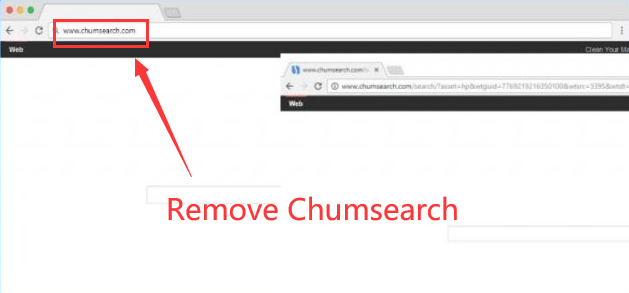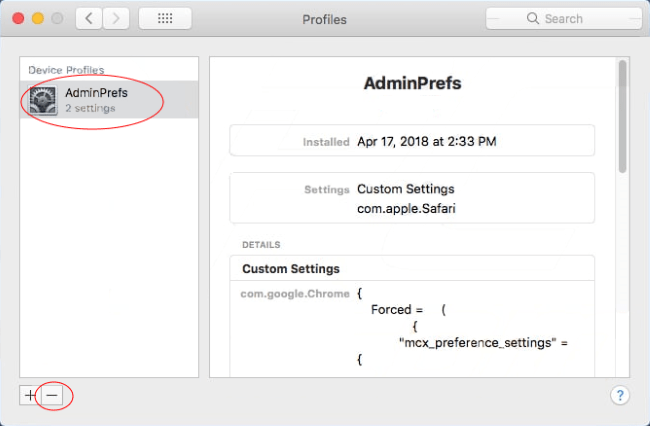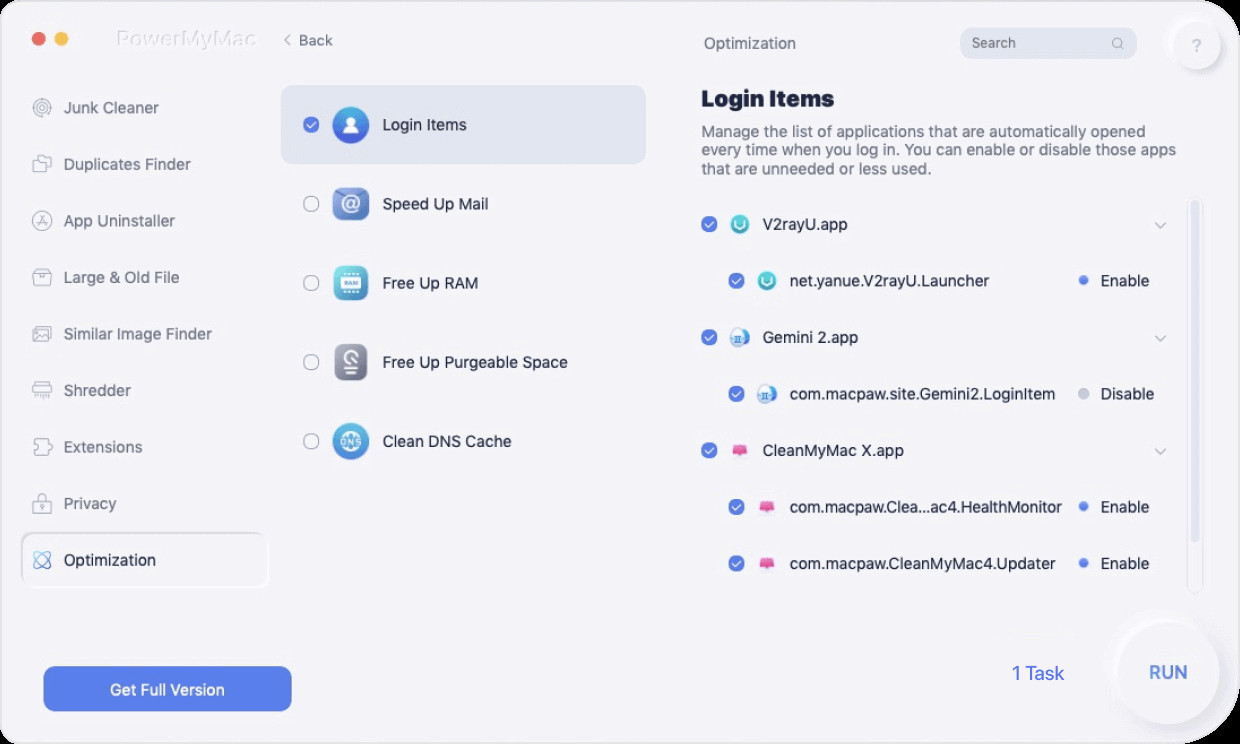Malicious software appears in a number of ways, from adware through worms. Chumsearch is yet another type category, the one which infiltrates your internet browser and diverts you towards its web browser so it can refer you to websites that you've not been to. Luckily, it's not that impossible to get rid of it.
So how to remove Chumsearch from Mac easily? Once you open it, rather than just going to your usual webpage, the tab will be redirected to the Chumsearch results page. You could say it to Chumsearch by searching at the URL mostly in the address bar as well as the very cheaply maintained 'search' tab. There have been a few numerous strategies that Chumsearch software can indeed be transmitted onto your device, but perhaps the most possible method is that this was combined with unauthorized way applications.
So, you may have installed something you assumed was a bona fide edition perhaps, Adobe Flash, that you are entering is a bunch of disgusting viruses. Advanced versions of macOS have been safeguarded by GateKeeper, and therefore by default helps prevent the installation of just about any app which is not on the App Store and from the developer Apple understands. That being said, if you really are operating an older version of macOS or even have overridden GateKeeper, users may mistakenly download the malicious software.
Part 1. What Is Chumsearch Browser Hijacker on Mac?
Is a web hijacker that could really change the web browser's main page then search engine to http:/Chumsearch.com. The Chumsearch.com diversion is enabled by the "ChumSearch" browser hijacker built by people, whether they recognize it or not. Sometimes, this sort of program is sold in ads or packaged with many other applications, making the customer confused as to where this program comes from. Browser hijackers are a form of malware developed for the intention of changing web browser configurations without any of the permission or approval of the user.
Once the browser hijacker of Chumsearch.com is mounted, typical signs usually involve:
- Modifying the default internet browser website page to Chumsearch.com
- Moving the browser search service to http:/Chumsearch.com
- Able to alter the 'new tab' feature to start a revamped search portal link
- Loads to your internet browser using the ChumSearch plugin as well as add-on
This potentially unwanted program (PUP) was deliberately often used to hijack the Mac's operating systems with either the aid of, ValueApps, Toolbar, NicePlayer, MPlayerX. MessageViewer, SearchProtect, and other related freeware applications. Functionally, it was not a virus. It was a potentially unwanted program that focuses on bundling when attempting to penetrate target networks. When finished, Chumsearch.com connects itself through Safari, Chrome, IE as well as other search engines and begins transferring the victim on a third-party website.

Part 2. How to Remove Chumsearch from Mac?
When you are tainted, we assume you would like to delete this irritating software from your device. Fortunately, it was not a complicated malicious software, and you'll get control of this redirected virus very quickly. To do this, you, therefore, need to find and uninstall this malicious software onto your device. You can even update the browsers one-by-one. If you really are unfamiliar with this method, please review the comprehensive Chumsearch workaround solution underneath this article. If you'd like an alternative solution to uninstall this hijacker from your browser, register for something like spyware or a malware protection service. We highly suggest that you uninstall Chumsearch immediately if you were really fresh too and eradicate viruses. In addition, the protection software will secure the device from several other potential viruses in the long term.
Delete Chumsearch Profiles
Unfortunately, Chumsearch.me finds it impossible for victims to undo the adjustments they have created. You could position and hide different codes onto your browser. In fact, Chumsearch.me could also build administrative requirements and user accounts to simplify the extraction process. That's why we made a quick guideline upon that section so that the victims could get rid of Chumsearch.me as quickly as possible. Scanners that can easily identify and remove any malicious entities connected with Chumsearch.me were included in the removal guide. Using all these resources helps to clean your device easily and efficiently. In addition, searching the device through antivirus software or anti-malware applications will identify or remove even profoundly secret artifacts belonging to Chumsearch.me and also the malicious code packages which come with that as well.
So, with that being said, we have to figure out if there was a fraudulent profile built upon on Mac. Whether it is, then you'll have to delete them.
Kindly take a concrete initiative below:
Significant update: Chumsearch.com hijacker creates a fraudulent Software Profile entitled AdminPrefs on your macOS that would not make it possible to create improvements to their web search engine or web page configurations. Follow directions as well to uninstall the whole account.
- Go to the system preferences and select Profiles.
- Throughout the selection of profiles mostly on the left side, select AdminPrefs and select the-" "key to delete it.
- Through your case, it should be viewed differently, within your case, all noticeable profiles can indeed be deleted.

And here's a step by step detailed guide for complete removal of Chumsearch.com from the computer. This performs 99 percent and has been tested with both the updated versions of the Chumsearch.com installation on hardware and software with either the latest patches including browser versions.
Then after the Profile is removed let's do the other steps to completely learn how to remove Chumsearch from Mac. In this stage, you will need to find the Chumsearch.com software or the unknown packages that you might not have built yourself. Delete both of these applications from your device.
- Open the Finder Application located on your dock.
- Click on the Applications located at the left side panel of the display of the Finder window.
- The Applications view provides a list of all the applications loaded onto your Mac OS. Then, you have to find Chumsearch.com / potentially malicious applications through navigating.
- To delete Chumsearch.com, right-click this, and afterward select "Move to Trash." (continue this procedure until all such applications are removed).
- Now you'll have to clear the trash since the software will rebound from either the trash. Right-click your trash button onto your dock, and afterward pick "Empty Trash".
Delete Chumsearch.com Daemons as well as Agents from Mac Startup:
- From the menu that appears on the screen, choose the Go to folder.
- In the "Go to Folder" pop-up window, follow one by one the next directions and including Chumsearch.com.plist. It'll also identify the suspicious program that the applications have developed.
- ~/Library/LaunchAgents
- ~/Library/LaunchAgents
- ~/Library/Application Support
- ~/Library/LaunchDaemons
- ~/Library/Application Support/com.Chumsearch.com/Chumsearch.com
- ~/Library/Application Support/com.Chumsearch.com/Chumsearch.com
- ~/Library/Application Support/com.Chumsearch.comDaemon/Chumsearch.com
- ~/Library/LaunchAgents/com.Chumsearch.com.plist
- ~/Library/LaunchDaemons/com.Chumsearch.comDaemon. Plist
For example, if you've had a malicious system called Chumsearch.com, you can see “~/Library / LaunchDaemons / com. Chumsearch.com.plist” throughout this destination. You'll see a large amount of data with the ".plist" extension. Click all over to figure out who seems to have been suspect.
- To delete Chumsearch.com launch agents, right-click on this and click "Move To Trash".
Just do it for the launch agent Destination /Library/LaunchAgents/com. Chumsearch.com.plist. just don’t forget to empty the trash.
Get Rid of Chumsearch from Login Items
The Web Browser hijackers, like most of the other ransomware, would like to open itself as soon as it enters up to someone’s Mac to place the others in your Login Items. This is how to delete Chumsearch in your Login Items.
How to remove Chumsearch from Mac on the Login items.
- Just go to the system preferences then select the Users & Groups section.
- Activate it by clicking on the lock icon, and afterward type in the login credentials.
- Then choose items on the Login section.
- Search for just about any login materials which might appear like Chumsearch or any other malicious software.
- When you see it, select it and then select the '-' key at the bottom throughout the screen to stay out of it.
If it all seems like a lot of effort, there's also an option. PowerMyMac’s Extension feature can do it the easy way it matches what it detects. It enables you to access and scan the Mac with just one destination. So if you click the View tab, you'll get a brief review of all extensions from the QuickLook, Spotlight, Proxy, Login, Services. You could even select any of them to tidy out documents. Here’s how to do it.
How to remove Chumsearch from Mac using the PowerMyMac Application tool:
- Download and install the PowerMyMac application tool.
- Launch and open the application.
- Choose the Optimization module.
- Scan all the login items.
- View the scanning result and choose Login.
- Switch the button from on to off to clean all the login

A number of start-up items are expected to slow things down the computational resources of the device. You could therefore deactivate and stop a few other unwarranted start-up items in the list in order to reduce the run-up time and enhance Mac system performance. Also, in this, you just need to flip the power on or off within each item to perform the service.
Part 3. How to Remove Chumsearch from All Browsers?
This malware removal method may seem daunting due to a large number of steps and the number of programs that are being included. We've only written properly to include simple, comprehensive, and easy-to-understand guidelines that everyone can use to uninstall malware for free. Please follow all of the procedures in the right order. If you've any concerns or suspicions at a certain point, please Pause and ask for help.
Remove Chumsearch from Mac in the Safari Browser
- Go to the "Preferences" browser. Select the "Safari" option mostly on the menu bar and choose "Preferences."
- Search the homepage. It would open a new window containing your Safari preferences, which will be located in the "General" section. Many browser hijackers can switch your default webpage, therefore make absolutely sure that your homepage is in the new website if you want to use this as your landing page.
- Next, select the "Extensions" key.
- Search the harmful extension and remove it. The "Extensions" screen will display a selection of all the extensions available on the Safari browser. Scroll down the list once you locate the unauthorized extension, and then select Uninstall to delete it. There have been no extensions built on Safari by definition.
The fraudulent extension might have a different identity on your computer. When you can not identify a malicious extension, you could even continue with the next move.
Remove Chumsearch from Mac in the Mozilla Firefox
When you're having trouble with Firefox, it might help you to restart it. The restart function addresses several problems by returning Firefox towards its factory default settings status whereas saving important information such as bookmarks, passwords, site type auto-fill details, search history, and opening pages.
- Just go to the Help list. Click the Firefox menu page tab, which is illustrated by three horizontal lines. When another drop-down menu occurs, pick the "Help" function.
- From either the Help panel, select the "Troubleshooting Information" tab.
- Select the "Refresh Firefox" key within the upper right-hand corner of the "Troubleshooting Information" tab.
- To continue, select the "Refresh Firefox" key in the latest confirmation screen that will appear.
- Firefox closes and switches to its settings page. When these are completed, a screen will display the details that have been imported. Click the "Finish" tab.
Your existing Firefox account would be saved on your computer in a folder called "Old Firefox Data." When the restore has not solved the dilemma, you could recover any of the details that have not been restored by copying the details to the new profile which has been generated. When you no longer use this file, you can uninstall it as it comprises confidential information.
Remove Chumsearch from Mac in the Chrome Browser
Google Chrome has the feature to reset from its default settings. Reset your browser settings, it will remove the unnecessary adjustments made by adding other software. That being said, the stored bookmarks or passwords really aren't cleared or adjusted.
- Launch the Chrome "Settings" screen. Click on the Chrome menu page tab, which is described by three horizontal lines. Once the drop-down menu appears, select its "Settings" choice.
- Chrome's "Settings" can be shown in a separate tab or browser, based on the setup. Then, scroll down to the bottom of the homepage and select the "Advanced" button.
- The advanced settings of Chrome can then be shown. Scroll to the bottom until another page "Reset and clean up" is available. Then, select the "Reset Settings to your initial defaults" key.
- The verification window will now be shown, detailing the resources which will be reset to the default position if you proceed with the reset process. To finish the restoration method, select the "Reset Settings" key.
Mac OSX is considered to become one of the best hardware platforms, but there has been no need for antivirus software for Mac for just a long time. However, with Mac computers including notebooks increasing in demand and technologies changing, worms, Trojans, adware, toolbars, hijackers as well as other malware laid the groundwork for Mac users. We suggest that you use the most powerful antivirus accessible for your Mac computer.
Part 4. Conclusion
The Chumsearch malware is one of several browser hijackers. It installs as well as the package containing fraudulent applications or updates. Although it can be really distracting and slow things down on your Mac, it's not really that hard to delete it. Take the necessary steps above, and in no way will this be gone. Chumsearch is indeed a potentially unwanted software program that acts as a web hijacker onto your Safari, Chrome, Firefox, or some other web you may be using. Typically, a browser hijacker like this one can display on your default search engine as a plug-in or add-on, that triggers changes to the certain setting page.
Such applications usually launch their operation by modifying the home page, the default browser, as well as the preview pane section, so if you launch your browser, you would immediately be met with any of the sites the hijacker is attempting to encourage. Typically, as soon as the hijacker accomplished these adjustments, users are redirected to specified websites to boost their visibility. Through endorsing these pages and assisting them to boost their popularity, hijacker creators raise money through strategies such as compensation-Per-Click.
Unfortunately, there really is no certainty that these pages are legal and benign, but some of these could be hiding malware such as Trojans, Malware, as well as other dangerous software risks that’s why you have to completely have a check of your device.